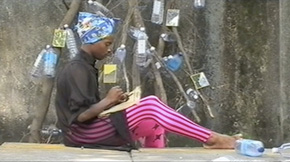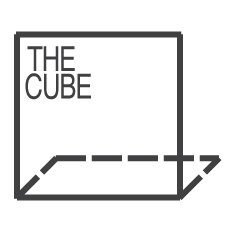
Athi-Patra Ruga
Johannesburg-based artist Athi-Patra Ruga has a habit of inserting himself into challenging situations. He once sat in the middle of a basketball court, mid-game, wearing Jane Fonda-era aerobics gear. He also teetered in stiletto heels and a black sheep costume atop a hill in Switzerland, while corralled in a pen with actual, white sheep. In each case, Ruga–whose work spans performance, video, and fashion–confronts prevailing racial, sexual, and cultural stereotypes by creating characters that embody extreme manifestations of those same stereotypes.
In 2006, he conceived of Miss Congo, a character dressed in drag and born out of the racial and gender inequities the artist witnessed while in Senegal. “[Miss Congo] represented ideas of displacement, of not belonging,” he says. For one year, Ruga, in character as Miss Congo, traveled to public spaces and wove tapestries while passersby observed him. The character eventually became the subject of a three-channel video documentary, Miss Congo, in 2007. The film depicts three of Ruga’s performances–solemn and lonely, but with a distinct undercurrent of humor and sensuality–that were carried out in Kinshasa, Democratic Republic of Congo. The artist stitches a tapestry while sitting or lying in anonymous locations on the outskirts of the city, performing a traditionally domestic task far outside the domestic sphere.
Ruga has called these performances “craft meditations”–interventions into public spaces that draw upon his practice of working with textiles and cross-dressing to express complex, layered notions of cultural and individual identity. The Miss Congo character also allows the artist to explore themes of place and belonging, exercising autonomy by choosing isolation and distance.
[ About Living as Form | Curator Statement | About the artists ] Share:


